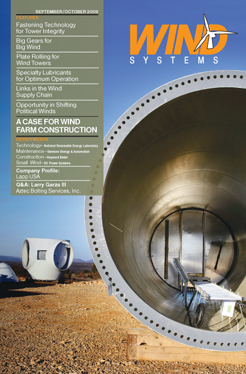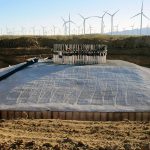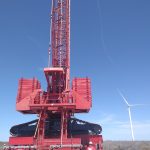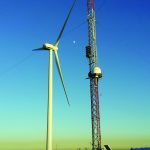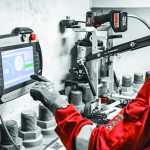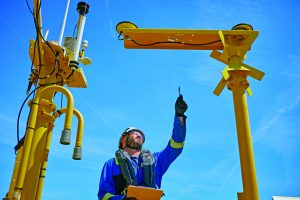With the increasing investment into the development of wind farms, preventive maintenance takes on an important role in ensuring the reliability and cost-effectiveness of this energy business. The reliable operation of the drive train requires the preventive maintenance of key components such as generators and gearboxes. The generator is the heart of the windmill power generation system, as it converts mechanical energy to usable electrical energy. A catastrophic failure of the generator will lead to a complete shut down of the windmill for several days, which results in expensive repairs and lost revenues. This can significantly affect the bottom line financial results. Among the several failure modes that may cause generator failure, the most frustrating and time consuming is a premature bearing failure. Although the cost of bearings is a small portion of the generator cost, its premature failure can cause catastrophic equipment damage and expensive downtime. A bearing replacement process in a wind generator is a complex and expensive process as the generator is housed in a nacelle. The typical cost for a bearing replacement in the field for a 1.5 MW wind generator may run in excess of $25,000 to $75,000, depending upon the location and the accessibility to the nacelle.
It has been observed from field experience that improper greasing, misalignment in the drive train, and shaft current are among the major causes of premature bearing failure in generators. There are several different improper greasing practices that occur: under-greasing, over-greasing, or the use of a grease type other than that recommended by the generator manufacturer. Bearing seizure can occur due to lack of lubrication if enough grease is not supplied to the bearings. Over-greasing of bearings may lead to excessive heat generation inside the bearing, which can lead to uneven thermal expansion of rollers and race causing a catastrophic bearing seizure. Some manufacturers supply generators with automatic greasing units to ensure the correct amount of grease is applied. Another common mode of premature bearing failure is Electrical Discharge Machining (EDM), which is caused by a passage of current through the bearings. This damaging flow of current can be prevented by insulating the bearings. Ground brushes are used in conjunction with insulated bearings to safely discharge the potential that otherwise discharges through bearings and damages the bearing insulation. It has been frequently observed from field repair experience that EDM bearing damage is often caused by improper installation or the mechanical wear of the ground brush on the machine.
Premature catastrophic bearing failure can also be caused by a high degree of misalignment between the gearbox and the generator. Misalignment in the coupling between the gearbox and generator leads to additional axial, radial, and angular forces on the generator bearings that reduce the bearing’s life, and in extreme cases results in failure. Implementing robust preventive maintenance programs and installing continuous condition monitoring systems on the generator can help avoiding premature bearing failure modes. A preventive maintenance program for generator bearings requires some key information, such as re-greasing intervals and the expected life of the bearings and ground brushes. In order to develop and implement a robust preventive maintenance program for wind farms, end users should consult their OEM for key information and technical expertise. Skilled technicians and manufacturer information are equally important for executing a successful program. Installing sensors such as accelerometers, shock pulse measurement (SPM) systems to monitor machine vibration, and thermocouples to monitor bearing temperature can prevent expensive equipment damage. Although these condition monitoring sensors can’t prevent bearing failures, they can provide early warning signals to prevent catastrophic equipment damage. It is imperative to store and compare sensor data regularly to perform trend analysis to predict bearing and equipment health.
Additionally, it is important to understand that proper training and knowledge is required to interpret critical vibration and temperature signals in order to make key decisions about the repair and maintenance. Although the initial cost of implementing and running preventive maintenance and continuous monitoring system program in the wind farm may seem expensive, most companies recognize the return on investment through reduced downtime and extended equipment life of the wind turbines.
















